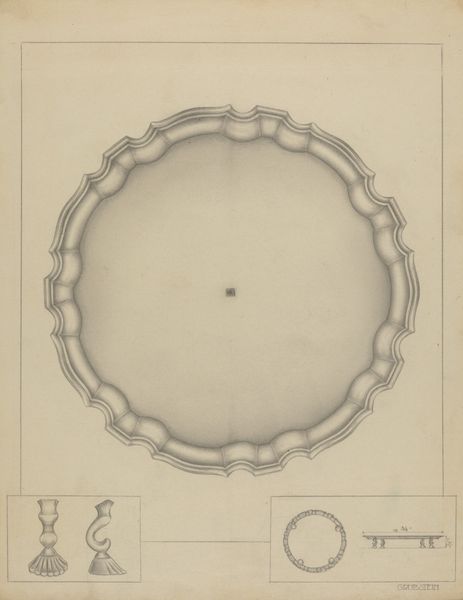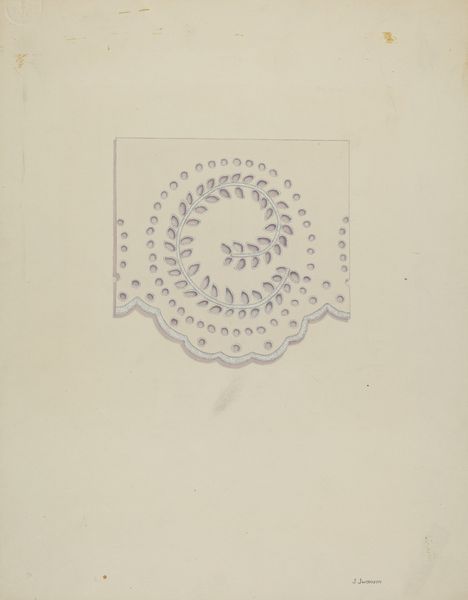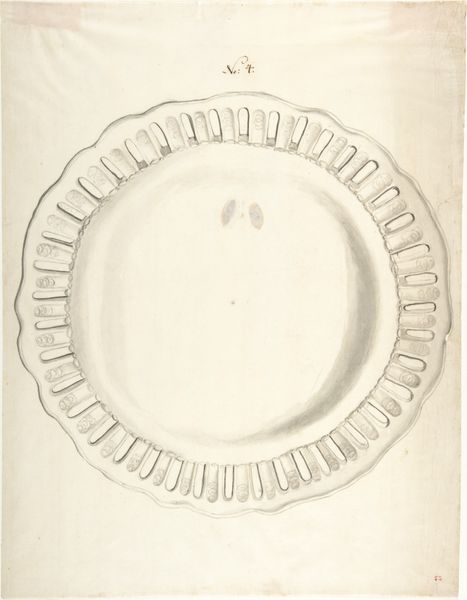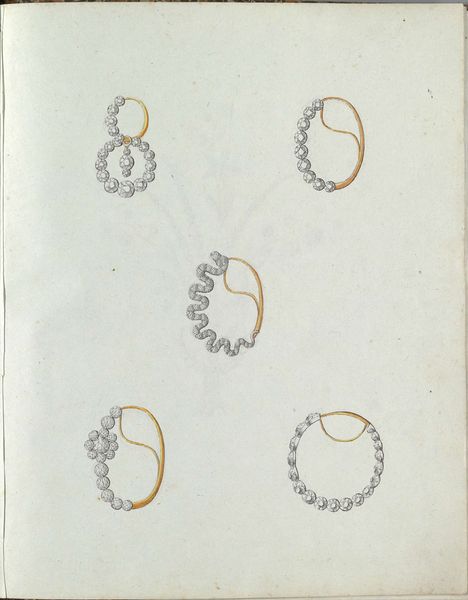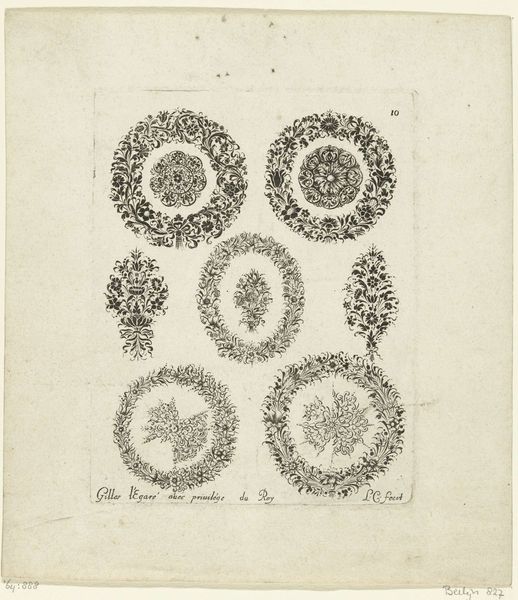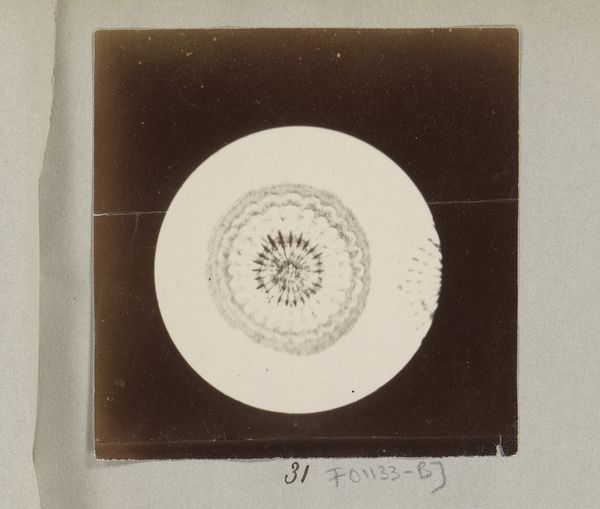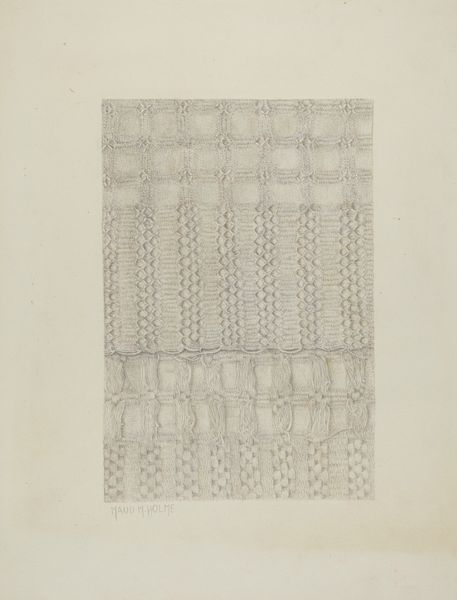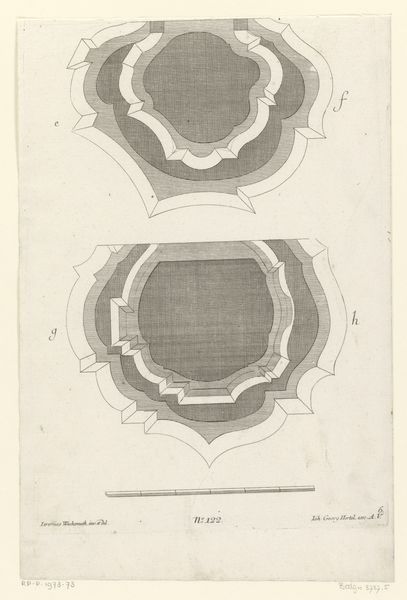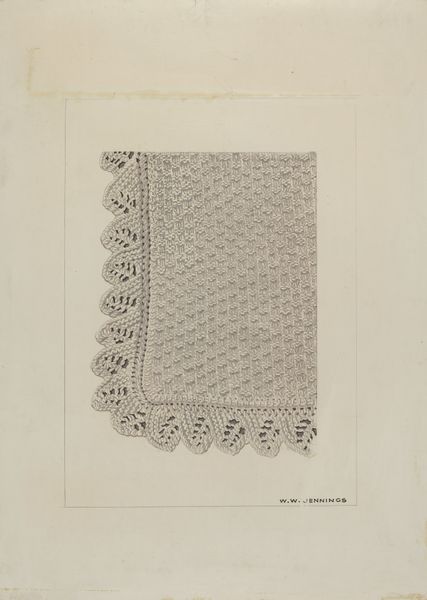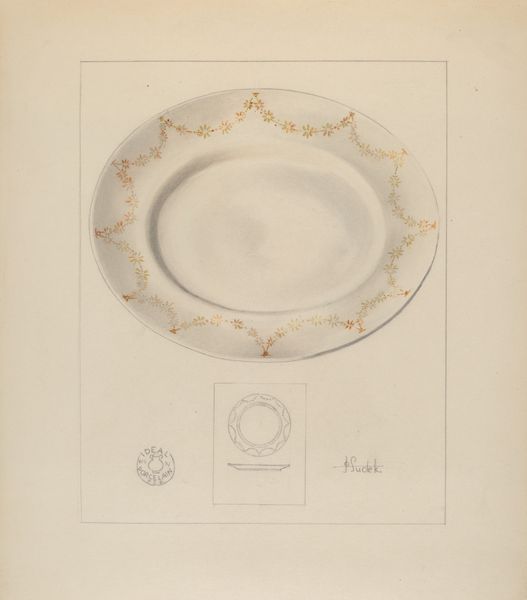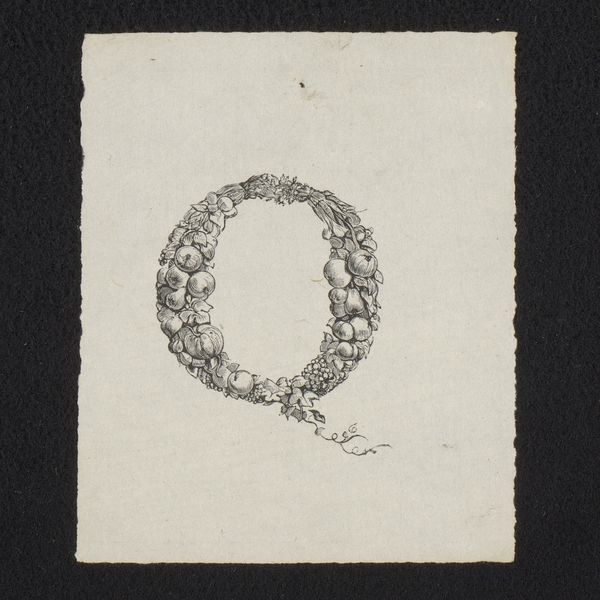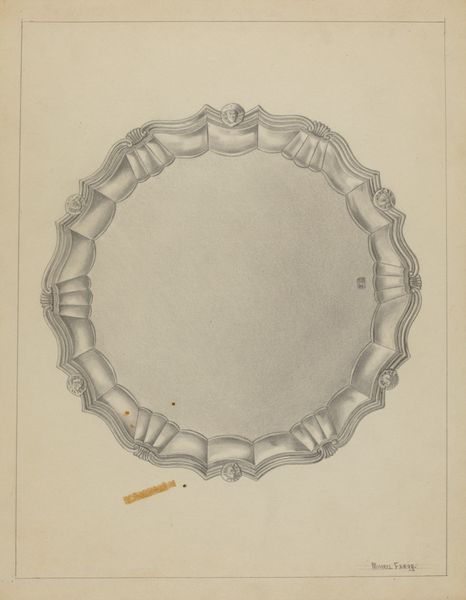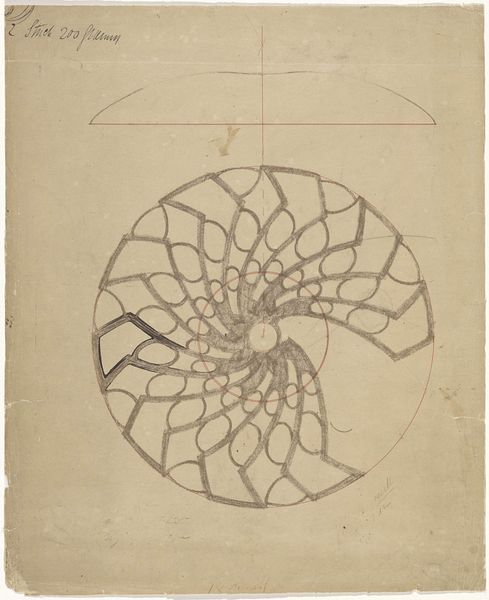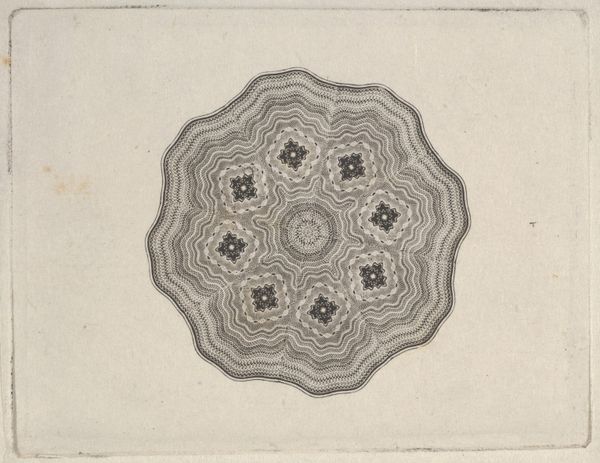
Dwarsdoorsnede van drie stengels korenstro, microscopisch 2000 maal vergroot 1851 - 1853
0:00
0:00
lithograph, print, paper
#
lithograph
# print
#
paper
#
line
#
realism
Dimensions: height 155 mm, width 165 mm, height 332 mm, width 254 mm
Copyright: Rijks Museum: Open Domain
Curator: Well, here we have "Dwarsdoorsnede van drie stengels korenstro, microscopisch 2000 maal vergroot," or, "Cross-section of three stems of wheat straw, magnified 2000 times." It’s a lithograph on paper by Auguste Adolphe Bertsch, dating back to 1851-1853. Editor: It’s strikingly… calm. I find the concentric rings and muted tones strangely peaceful, meditative even. Considering it's a scientific illustration, there's a surprising beauty. Curator: Indeed. Bertsch uses lithography, a printmaking technique, to meticulously render these cross-sections. The choice of material – paper and lithographic stone – speaks volumes about the intersection of art, science, and accessibility in the mid-19th century. Printmaking allowed for wider dissemination of knowledge. Editor: The circle has been a prevalent symbol throughout history. It represents wholeness, cycles, and eternity. Do you think Bertsch was consciously imbuing his scientific rendering with that symbolism, perhaps suggesting the cyclical nature of life and harvest? Curator: Perhaps. But I would suggest a closer look at the labour involved. Someone had to slice these stems, prepare the lithographic stone, and precisely transfer the image. We can view it as evidence of scientific inquiry, certainly, but also a meticulous act of skilled craft. Editor: That precision and order definitely reflect a cultural desire to understand and categorize the natural world, turning these microscopic pieces into representations that reinforce that mastery over nature. Curator: Absolutely. The magnification is also key. By blowing up the structure, Bertsch reveals its complexity and functionality, reminding us of the inherent design present in even the simplest material. Editor: It makes me think about our relationship with nature. This cross-section, usually unseen, becomes a focal point, urging us to contemplate the intricacies we often overlook. The straw, a basic component of human civilization, is transformed into a visual testament to underlying harmony. Curator: That relationship also highlights the historical connection of art to the science, the intersection that's vital to art’s very making and also the spread of vital information. Editor: And the act of magnification, presenting that sense of power that's connected so profoundly to art-making throughout time. Thanks, this gave me a different outlook. Curator: It was a great exchange. Seeing the cultural meanings next to production values is enlightening.
Comments
No comments
Be the first to comment and join the conversation on the ultimate creative platform.
